Ice Age Legacy: Man, Beast, and Evolution
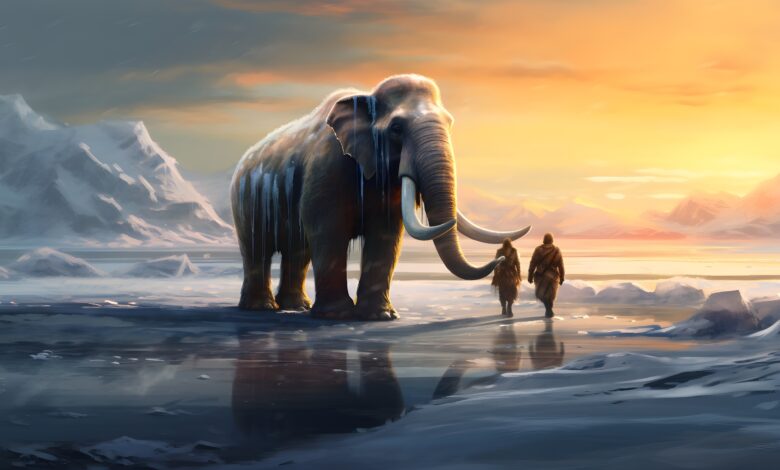
The Ice Age, stretching over millions of years, brought about many unique animals, many of which have long since vanished from the Earth. The majesty of these beasts is partly retained through the stories and remains they left behind. But even more compelling is the relationship these creatures shared with the early humans, a dynamic dance of survival, adaptability, and, at times, mutual respect.
Majestic Creatures of the Ice Age
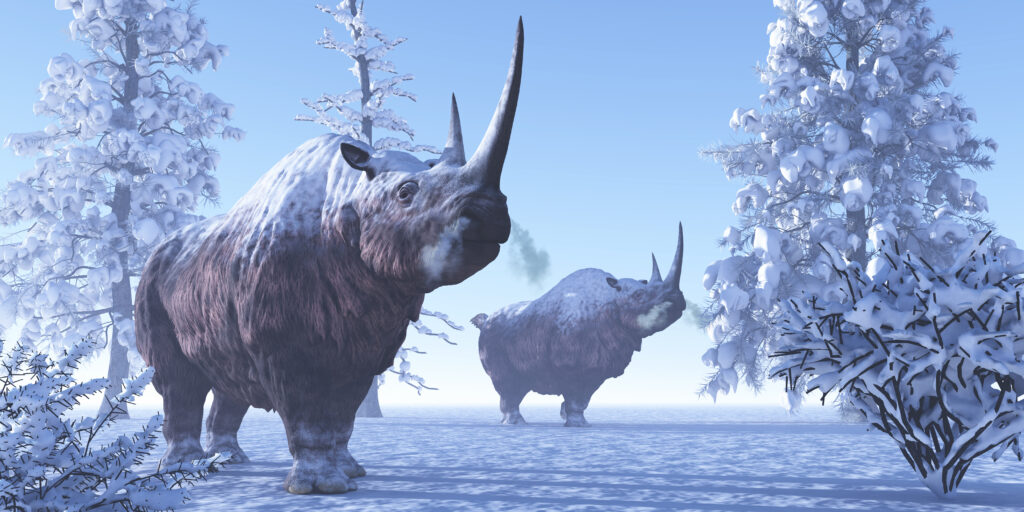
In its vast span, the Ice Age bore witness to the reign of numerous formidable creatures, not just the iconic mammoths and saber-toothed tigers, from the densely-coated woolly rhinoceros flaunting its massive hump to the dire wolves, which, in their intimidating packs, dominated the snowy terrains. The skies, too, weren’t void of majesty: the teratorn, a massive bird, showcased a wingspan exceeding 12 feet. And underneath, hidden in caverns, the mighty cave bears resided, creatures with stature and might that modern bears cannot match. These animals’ resilience was their hallmark. Adorned with plush fur and accumulated fat, they braved the cold, diversifying their diets to maximize the frost-covered land’s sparse offerings.
Humans: Adapters and Hunters
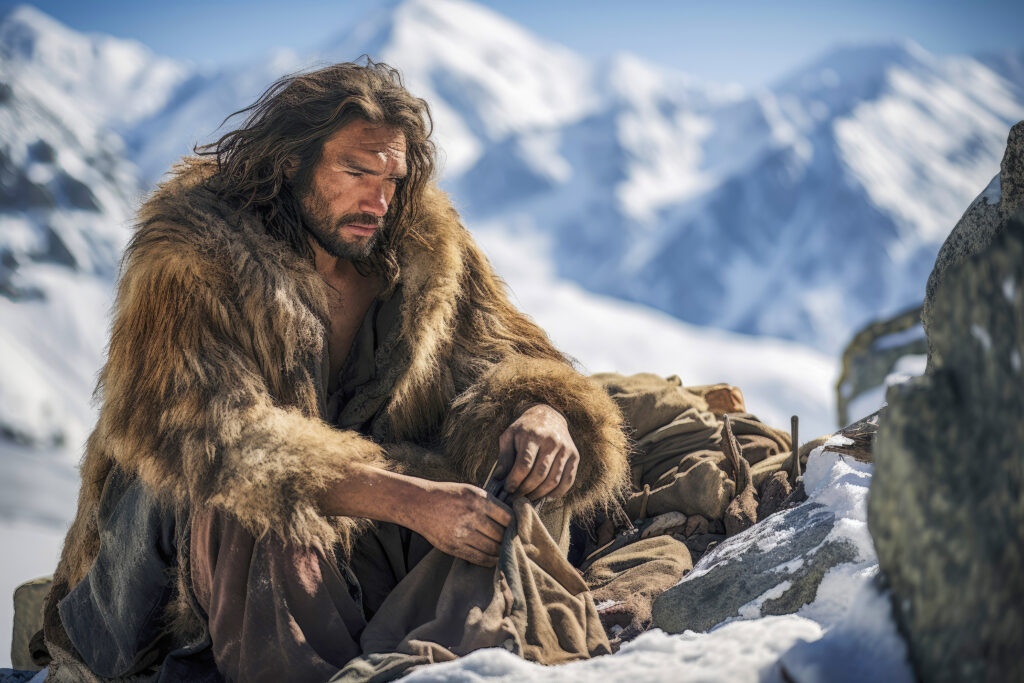
The Ice Age’s early human inhabitants showcased an incredible blend of ingenuity and survival instinct. Positioned uniquely as hunters and the hunted, they thrived amidst towering beasts, leveraging their cognitive prowess. Their inventiveness shone brightly, crafting tools tailored for the giants they pursued. One such creation, the atlatl, revolutionized hunting by offering increased range and precision. But their relationship with animals wasn’t solely predatory. The domestication of particular creatures, notably the bond solidified with canines, began during this time. These early domesticated dogs served dual roles – assisting in hunts and offering much-needed warmth and company during the frigid nights.
Artistic Representations: A Glimpse into Their World
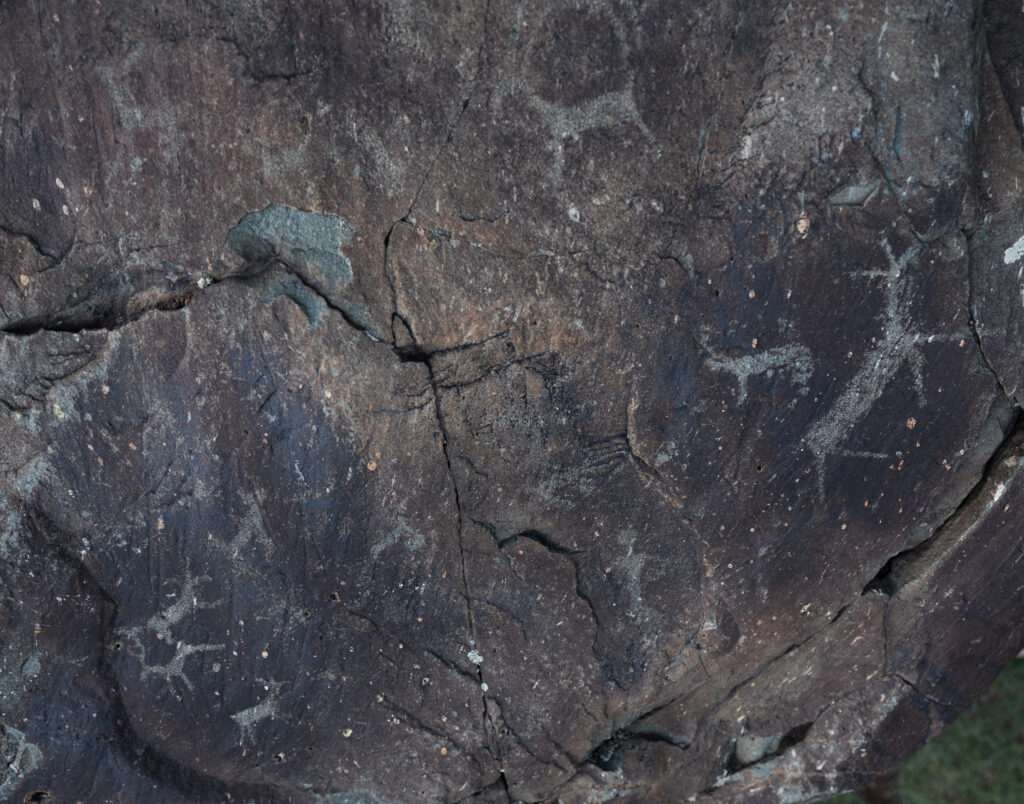
Art from the Ice Age is a window, offering views into a world lost in time. Cave paintings, especially the mesmerizing ones from Lascaux, France, echo the profound relationship between man and beast. These artworks, with their intricate designs, capture the physical might of these creatures and, more importantly, the deep-seated reverence early humans held for them. Beyond mere depictions, these paintings could have served multiple purposes – perhaps spiritual rituals, hunting strategies, or merely preserving the collective wisdom of their age for future generations to glean.
Extinction and Environmental Change

The transition from the Ice Age heralded a phase of rapid climatic shifts, which many animals couldn’t weather. As the ice retreated, landscapes transformed, displacing many cold-adapted species. Concurrently, debates about the role of humans in this great dying persist. Some argue that overzealous hunting practices accelerated their end, especially targeting creatures like the mammoth. However, such conclusions might be oversimplified. It’s more plausible that a matrix of factors — encompassing habitat alteration, interspecies competition, and human interference — collectively scripted the tragic extinction narrative.
Legacy: How They Shaped Our Evolution
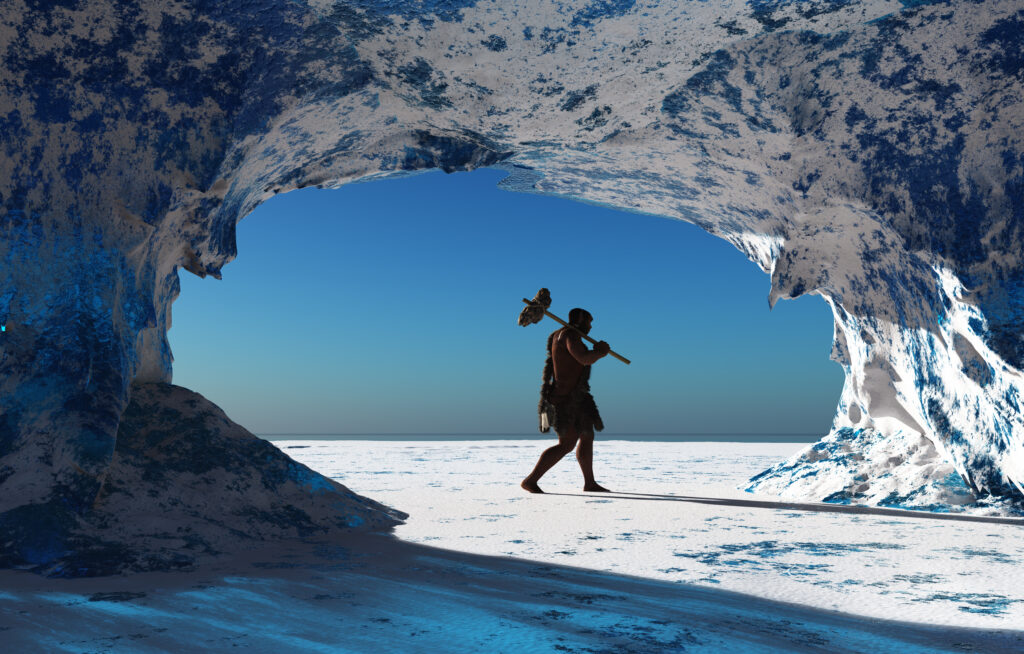
The footprints of the Ice Age are deeply imprinted on the human evolutionary journey. The epoch, characterized by its colossal beasts and relentless cold, necessitated rapid human adaptability. Early humans had to innovate to survive, leading to groundbreaking advancements in tools, refined communication methods, and robust societal formations. Every confrontation, every chase, and every shared moment with these behemoths refined our ancestors’ strategies, strengthening group cohesion. The enduring legacy of this period is undeniable. The adaptability, strategic thinking, and even the deep bond with animals we cherish today can trace their roots back to these pivotal interactions of yore.
This period, marked by brutal survival and moments of harmony between man and beast, has left a lasting impression on our genetic and cultural legacy. Modern humans owe much of their resilience, adaptability, and perhaps even their affinity for animals to these early interactions.
Disclaimer
This article is for educational and informational purposes only. While HistoryReveal.com strives for accuracy, historical interpretation may vary, and readers are encouraged to consult additional sources for deeper study.